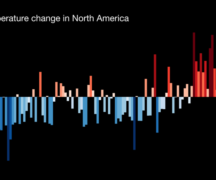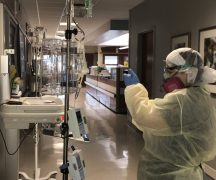Ohio Gov. Mike DeWine on Monday announced that he was again expanding eligibility for the coronavirus vaccine as more and more doses flow into the state.
Starting Thursday, Ohioans over 50, those with type 2 diabetes and those with end-stage renal problems will be able to get one of the three vaccines so far approved by federal authorities. That means more than 1 million additional Ohioans will be eligible.
“As fast as this vaccine is coming into Ohio, we’re ready to get it out,” DeWine said.
The makers of the first-two vaccines to be approved — Pfizer and Moderna — have dramatically increased production in recent weeks. Then the single-shot Johnson & Johnson vaccine was approved two weeks ago and the company quickly announced a partnership with drugmaker Merck to scale up production of that vaccine as well.
But increased supply doesn’t appear to be the only factor allowing DeWine to quickly expand eligibility for the vaccine. Millions of Ohioans appear to be declining the shots after they become eligible.
Since vaccines first became available in December, DeWine said one of his guiding principles in deciding who would get priority would be to save the most lives. Ohioans over 80 were the most likely to die from a case of covid, and on Jan. 19, they became eligible for vaccinations.
Despite seven weeks of eligibility, only 65% of Ohioans over 80 have been vaccinated, according to the state’s vaccine tracker. And more of that age group has been vaccinated than any other.
Ohioans 75-79 have been eligible for the past six weeks, but only 62% have received a shot. Those 70-74 became eligible on Feb. 1, but only 59% of them have been vaccinated.
Perhaps most alarming, Ohioans 65-69 have been eligible for a month, yet not quite half — 48% — have gotten shots.
Epidemiologists have estimated that more than 70% of the population will have to be vaccinated — or maybe have natural immunity from being infected with the virus — to achieve herd immunity. That’s when enough erstwhile hosts of the virus have defenses against it, making it difficult for the virus to maintain a foothold.
DeWine on Monday acknowledged that large numbers of eligible Ohioans haven’t been vaccinated.
“What we’ve seen so far is that as we get lower in the age groups, it takes longer for (the percentage vaccinated) to go up. It is what it is,” he said. “I’m not sure I can say I’m happy or not happy about it. It is what it is. We certainly want to get as high numbers as we can.”
Even after there are plenty of doses in Ohio, the governor said, more work will need to be done.
“We’re in a sprint to get as many people vaccinated as quickly as we can, but we’re also in a marathon in the sense that this won’t be over and we’re going to continue to work on this — working on messaging… so that every person has the opportunity to understand what the vaccine does or answer any questions they might have,” he said.
***
Also from Ohio Capital Journal:
CDC: It’s OK for vaccinated grandparents to visit family if no risk for severe disease
WASHINGTON — People who are fully vaccinated against COVID-19 can safely socialize inside with other vaccinated individuals without wearing masks or maintaining distance, federal health officials advised Monday in their first formal guidance for vaccinated Americans.
Perhaps more critically at a time when more than 90% of Americans are still waiting to be fully vaccinated, the Centers for Disease Control and Prevention guidelines also detail one scenario in which public health officials suggest it’s safe for those who are fully vaccinated to gather with those who are not.
Vaccinated individuals can gather with one other household that includes people who have not been vaccinated, as long as none of those lacking vaccines are at high risk for complications from COVID-19, officials said.
“If grandparents have been vaccinated, they can visit their daughter and her family, even if they have not been vaccinated, so long as the daughter and her family are not at risk for severe disease,” CDC director Dr. Rochelle Walensky said during a news conference. READ MORE
Health expert: New covid vaccine not only is as good, it might be better
There’s been lots of good news on the vaccine front.
Not only are Pfizer and Moderna quickly ramping up production of their vaccines. Johnson & Johnson last week received approval for the one it developed. Then the company quickly announced a partnership with Merck to vastly increase production.
These developments and others have President Joe Biden predicting that enough vaccines will be available in the United States by the end of May for every adult to be inoculated. That doesn’t mean, however, that all those vaccines will be fully distributed by then.
But amid all this good news are questions about whether the newest vaccine is inferior to the others. While the Pfizer and Moderna products went to hospitals and giant pharmacy chains, the Johnson & Johnson vaccine last week was sent to independent pharmacies, which often are in less populated parts of Ohio.
That raises a question: Is a second-rate vaccine being sent out to folks in the sticks?
The answer appears to be an emphatic no. READ MORE





